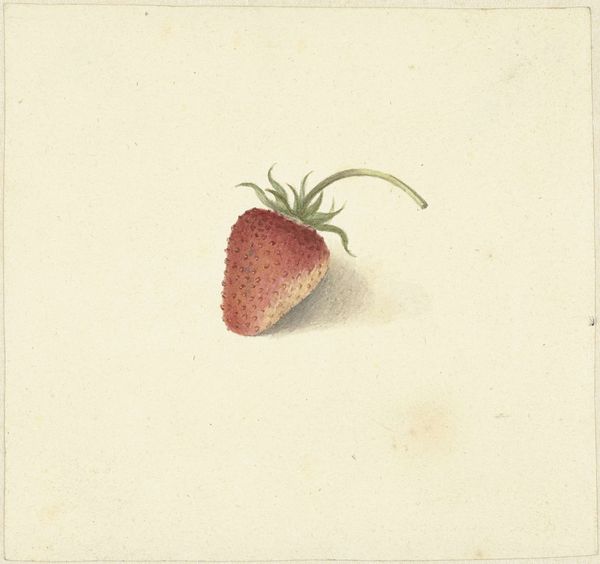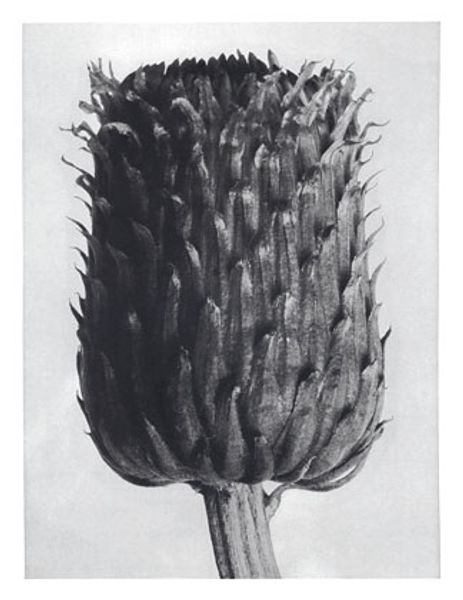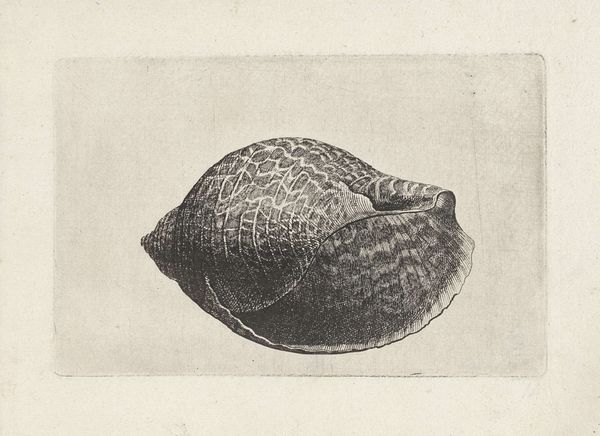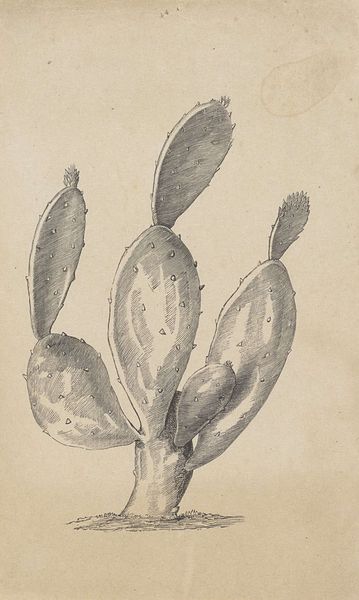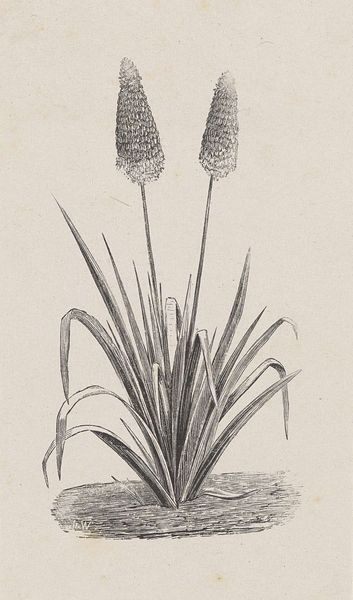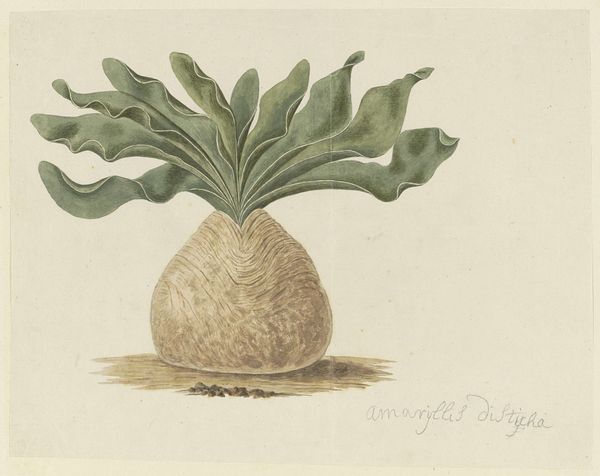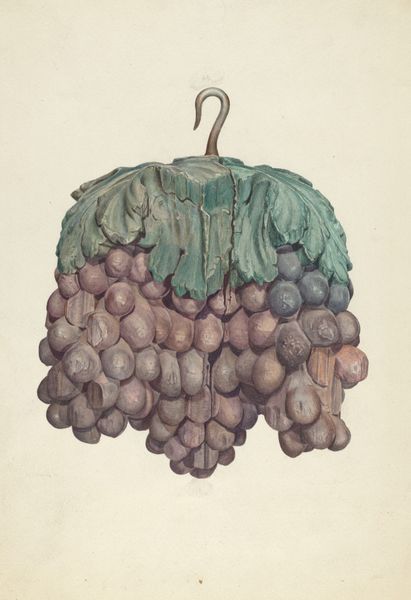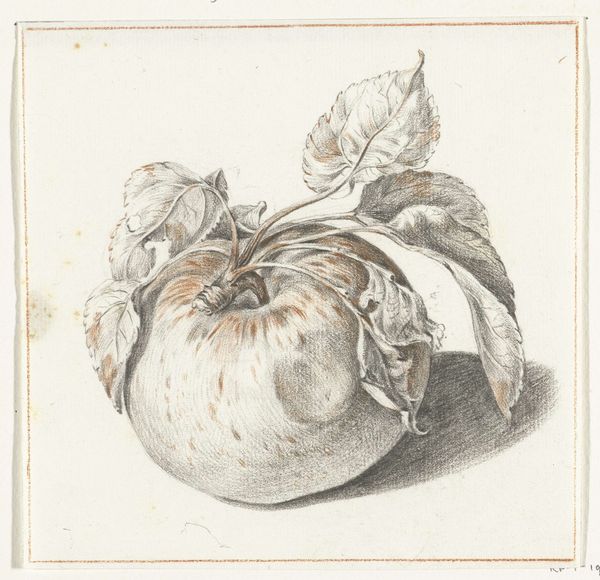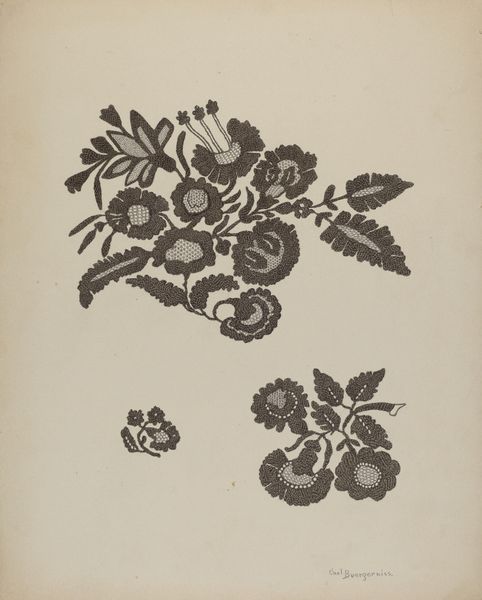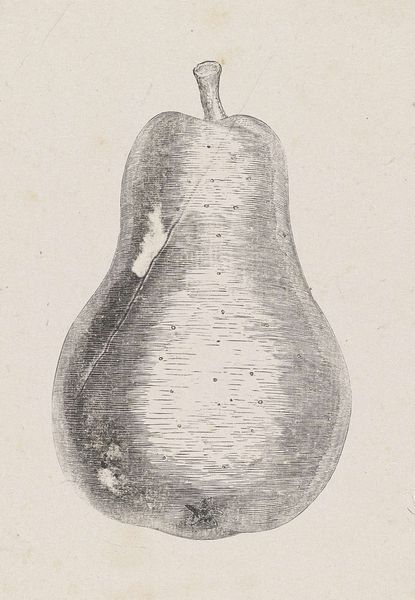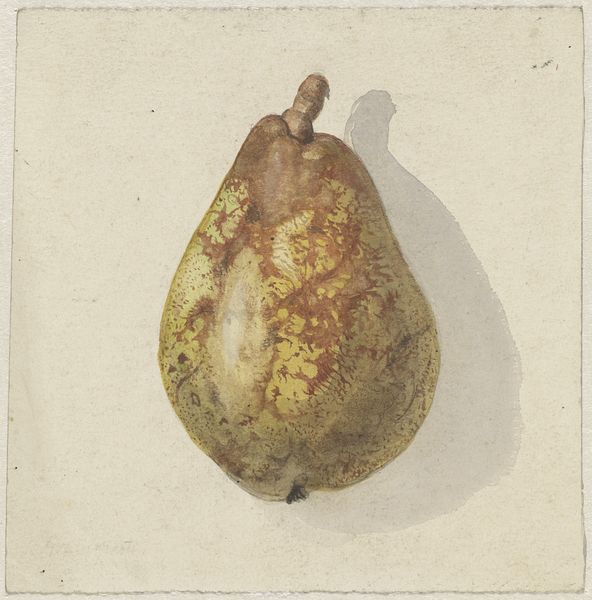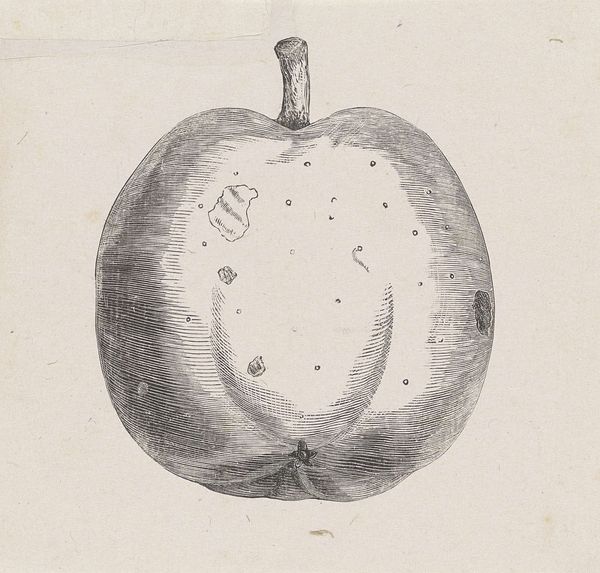
drawing, ink
#
drawing
#
ink
#
line
#
realism
Dimensions: height 92 mm, width 67 mm
Copyright: Rijks Museum: Open Domain
Curator: This drawing, called "Aardbei," meaning "Strawberry," is by Isaac Weissenbruch. It was executed between 1836 and 1912 and now resides here at the Rijksmuseum. The work is rendered in ink using a rather delicate linear style. Editor: My initial impression is its somber quality. The stark monochromatic palette coupled with a highly structured rendering suggests more of an architectural study than an evocative still life. It almost feels... engineered. Curator: Precisely! Notice the almost scientific rendering of the strawberry's surface. The precise arrangement of the achenes—the "seeds"—and the cross-hatching that articulates the form indicate an analytical gaze. Editor: That cross-hatching, for me, speaks volumes about the labour involved. It’s painstaking work, etching each line to build the tonal values. It's clear that the making of this artwork would require time, focus, and skilled labor. Was this intended for mass production? Curator: It seems more focused on precision and conveying information through careful detail. The formal approach guides our focus to the texture of the berry skin. Note also the botanical exactness in the rendering of the sepals at the top of the fruit. Editor: Perhaps it serves as both information and artistry. Consider how it might have appeared in botanical catalogs or agricultural publications of the era. Even within those functional parameters, the human hand remains evident. You see the labor behind the construction of our interaction and the piece itself. Curator: The artwork makes use of contrast of shadow and line. But its muted impact also brings me back to the material: this piece reminds me of Dutch Golden Age still-life paintings and their intense focus on the texture and lighting of individual objects. The image speaks of simple observation. Editor: I agree that there is a simplicity that lends the piece power, as do the implications of human capital involved in its labor and delivery. I would like to consider where exactly the fruit was sourced and by whose hand and for what reasons the study occurred in the first place. Curator: A fresh perspective on a seemingly simple fruit. It appears that analyzing its intrinsic structures and the lines of perspective used still lead to fresh discussion. Editor: Exactly. Sometimes, the deepest layers lie beneath the seemingly simple surface—much like the delicate skin of a strawberry.
Comments
No comments
Be the first to comment and join the conversation on the ultimate creative platform.
